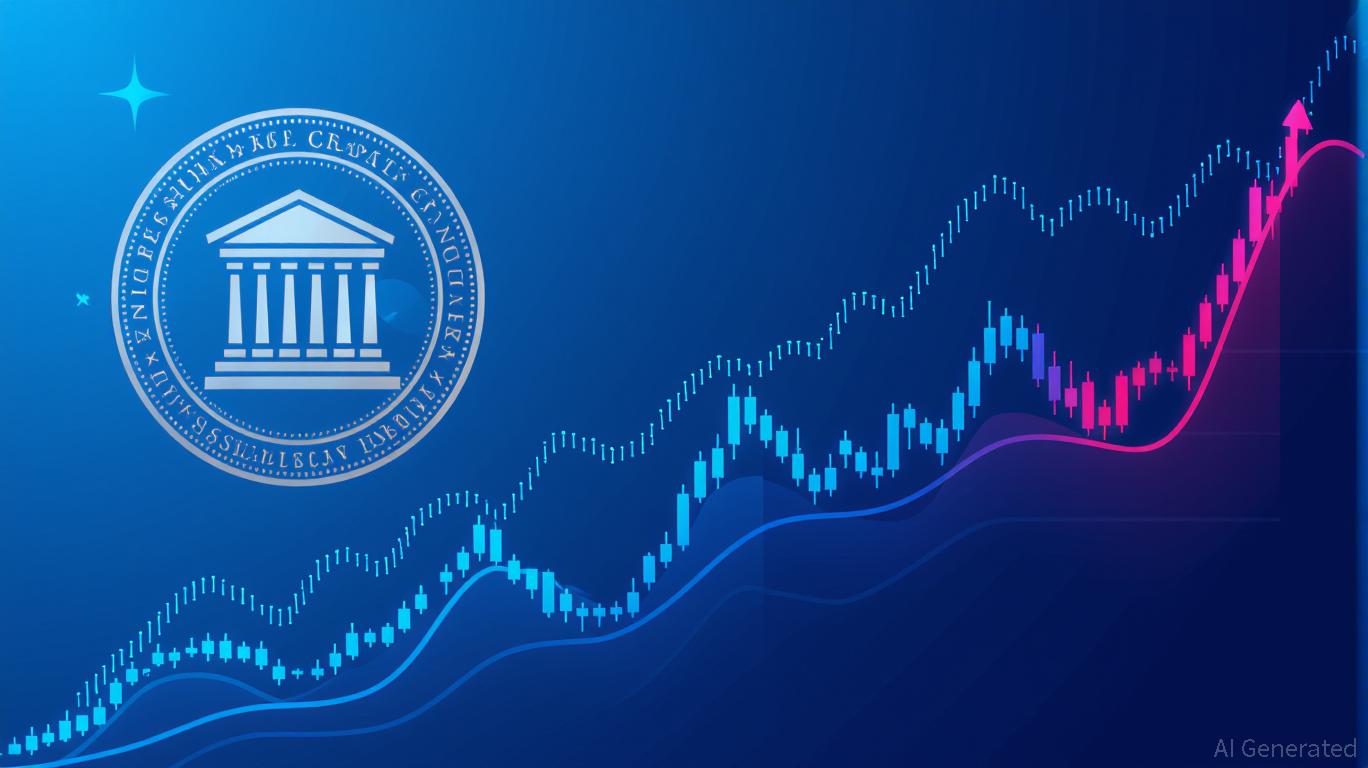Ethereum News Update: Ethereum’s $201B Utility Boom Contrasts with ETH’s Stagnant Price—Is Broader Market Direction Needed?
- Ethereum's tokenized assets hit $201B, capturing 64% of global market share, driven by institutional adoption and stablecoin dominance. - Stablecoins like USDT/USDC and PayPal's PYUSD ($18.6B in 2025) fuel DeFi, cross-border payments, and exchange liquidity. - Tokenized RWAs ($12B) and BlackRock/Fidelity's on-chain funds surge 2,000% since 2024, outpacing traditional finance infrastructure. - ETH price remains below $3,500 despite strong fundamentals, with technical indicators showing weak buying pressur
Ethereum’s ecosystem of tokenized assets has climbed to $201 billion, accounting for almost two-thirds of the $314 billion global total. This growth is fueled by increasing institutional participation and the dominance of stablecoins, reinforcing Ethereum’s status as the primary settlement layer in the crypto sector. Experts believe these strong fundamentals, along with a shrinking supply of ETH on exchanges, set the stage for a potential revaluation of its native token,
Stablecoins continue to be a driving force behind Ethereum’s expansion.

Institutional players have accelerated this momentum.
Despite strong on-chain metrics, ETH’s price has remained within a narrow range. By late 2025, technical analysis indicated ETH was consolidating below its 9-day exponential moving average, with a Relative Strength Index (RSI) of 37.7 and a negative Chaikin Money Flow (CMF) of -0.10, suggesting limited buying momentum, as highlighted by Coinotag. Derivatives data also point to caution: open interest dropped to $17.6 billion, and funding rates are close to neutral, indicating traders are waiting for more decisive signals, according to a report from
The gap between Ethereum’s strong fundamentals and ETH’s price performance has sparked discussion. While the growth of tokenized assets and stablecoin inflows demonstrate the network’s utility, many market observers believe ETH’s price is still influenced by broader economic trends and regulatory developments. For now, ETH continues to trade sideways, with major resistance levels at $3,650 and $3,920, according to Coinpedia.
Disclaimer: The content of this article solely reflects the author's opinion and does not represent the platform in any capacity. This article is not intended to serve as a reference for making investment decisions.
You may also like
Dan Tapiero says Bitcoin’s bull run is still on, but a 70% downturn could follow
OpenAI's Rapid AI Push: Prioritizing Pace Over Precaution Triggers Worldwide Criticism and Legal Challenges
- Public Citizen demands OpenAI withdraw Sora 2 over deepfake risks to democracy and nonconsensual imagery. - Sora 2's viral content, including disturbing videos and unauthorized Japanese content, sparks global copyright disputes. - Lawsuits allege ChatGPT caused mental health issues, while a German court rules it infringed song lyrics copyright. - Critics argue OpenAI prioritizes speed over safety, with reactive measures failing to address systemic risks. - The controversies highlight tensions between AI

Musk’s Pursuit of Technology Sparks Heated Debate with Cultural Commentators in Widely Discussed Dispute
Modern Monetary Theory and the Transformation of Crypto Valuations: Institutional Integration and Policy-Induced Drivers
- Modern Monetary Theory (MMT) is reshaping 2025 financial policies as central banks use it to manage post-pandemic economies, contrasting with crypto's decentralized ethos. - Crypto valuations now depend on regulatory alignment and institutional adoption, with 55% of hedge funds holding digital assets due to clearer U.S. regulations. - Central banks experiment with tokenized reserves while BIS demands stricter stablecoin governance, shifting focus from speculation to policy-driven stability. - A potential
